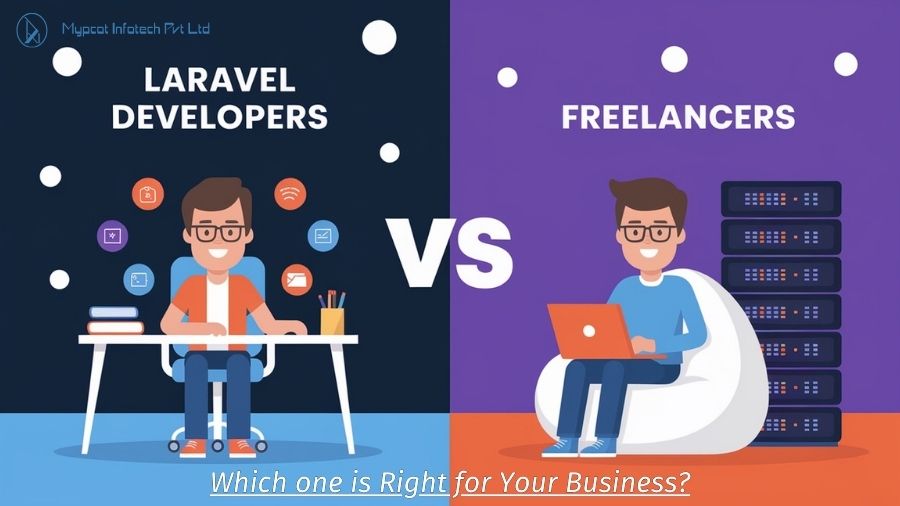In today’s world mobile phones have become an important gadget but what makes them so successful? Well, the answer is the variety of applications that are used for online shopping, booking a ride, ordering food, and more.
These applications have become important parts of our lives. However, they don’t become successful on their own. What makes them so appealing is their UI/UX design for mobile apps.
UI/UX refers to the user interface and user experience of a mobile app. In simple terms how the app will look and feel to use. To make an app appealing, developers focus on user-centric design.
The primary goal of this process is to design an app that aligns with the user’s needs and preferences. In this guide, we will discuss user-centric design, why it’s important for mobile apps and its key elements.
Make sure to read this full guide to understand the topic in depth.
Table of Contents
ToggleWhat is User-Centric UI/UX Design for Mobile Apps?
A user-centric UI/UX design means creating an application that is easy to use and visually appealing. And, most importantly, meets the needs of its users. This process is implemented to create a smoother user experience.
So, when the users gain a smooth experience with the app they can stay engaged longer and continue using it without any difficulties.

Difference between UI and UX:
In UI/UX the UI refers to the user interface which focuses on how the app looks. UI deals with the colours, fonts, buttons, and overall app layout. UI improves the overall appearance of an application and makes it appealing to the users.
UX on the other hand refers to the user experience of the app. This focuses on how the app feels to use. UX deals with the technical parts of an application like making navigation easier for the users. Reducing the load time. And, optimising search functions.
UI and UX Working Together:
To make a sustainable and successful app both UI and UX are equally important.
Take an example of a mobile banking app. If the application has a clean and simple user interface it will be easier for the users to navigate.
However, if the app is slow then the User Experience will be bad and it will frustrate the users. To maintain a perfect balance UI and UX work together UI maintains a clear design and UX maintains a positive experience.
Also Read: Differences between iOS and Android App Development
Why is User Friendly UI/UX Design Important for Mobile Apps?
A user-centric design is very important for mobile apps. Let’s discuss how.
1. Enhances User Engagement:
When the mobile app is designed by keeping the user’s requirements and preferences in mind, it enhances user engagement.
A user-friendly app feels easy to use so when the users find an app easy to use, they will more likely engage with it regularly.
2. Increases Retention Rates:
A user-friendly design increases the app’s retention rates. If your app is difficult to use, the users will lose interest in it.
Retention rate plays an important role in making an app successful. Take the example of social media apps like Instagram and YouTube.
These types of apps have simple user interfaces. This lets users spend more time on the platform.
3. Reduces App Abandonment
Good UI/UX design plays a huge role in designing an application. And, the majority of the apps fail because of poor-quality design.
This is because users don’t like apps that are slow, have poor interface design, or are hard to navigate.
A User-Centric Design focuses on building mobile apps that have faster loading time. And are simple to navigate with a good interface design. All these key factors prevent the users from abandoning the app.
4. Boosts Conversion Rates
Good UI/UX design can also boost the conversion rate. If the app is well-designed and looks professional to the users it leaves a positive experience. This can also increase user engagement and motivate the users to make a purchase or sign up for services.
User-centric design approach reduces the complexity of an app. Additionally, it makes it easier for customers to purchase products, and book rides or accommodations. This then leads to higher conversions.

Key Elements of User-Centric UI/UX Design
Now let’s discuss the key elements of UI/UX Design.
- Simplicity & Intuitive Navigation
The focus of User-Centric Design is to create a simple and straightforward app so the users don’t face any difficulties.
It removes any unnecessary elements that can cause confusion. User-centric design also adds Intuitive Navigation in a mobile application to make it feel more familiar to the users.
This ensures that the users can navigate through the application without feeling overwhelmed.
- Responsive Design
Mobile apps have to work on different kinds of devices with different screen sizes. For example smartphones and tablets. The user-centric design creates a responsive design.
This means that the app can easily adapt to different devices and resolutions. This provides a consistent experience across different devices.
- Faster Loading Times
Users expect the apps to load quickly. If the app is slow it can cause frustration and users will abandon it.
This is where user-centric design becomes important. It optimises the performance. And, also reduces loading times helping to keep the users engaged. Faster-loading apps retain more users and provide a better experience.
- Consistency in Design
Consistency in design is also very important. It makes the app look more appealing to the users and provides a premium experience. Consistent colour, fonts, and layouts create a smooth and familiar experience. This enhances the quality of the app making it look more professional and stand out from competitors.
- Accessibility Features
User-centric design makes an app accessible to everyone. Adding features that help the users adjust text size, and choose different theme types or different color modes.
These options make the app flexible. This also allows the users to increase or decrease text size. So, they can read the content comfortably regardless of their visual preferences.
The user-centric design also incorporates navigation options for people with disabilities. For example voice commands, touch-based navigation, and text-to-speech.
Also Read: Kotlin Android App Development Process: A complete guide.
Best Practices for Creating User Friendly UI/UX for Mobile Apps
Before designing an app, it’s important to consider some of the key practices that can improve the overall quality of your app.
- Conduct User Research
Doing User Research helps you to understand the needs and preferences of your audience. It is the first step in creating a user-centric app.
Try to gather insights into the user’s behaviour and preferences. It will help you to understand their needs and then you can design an app that meets their expectations.
- Regular Testing and Feedback
Gather regular feedback because it helps to identify any issues within the app and also know what the users want.
Regular testing throughout the development process is also important. It mitigates any issues and improves your application to deliver a smooth experience.
- Focus on Visual Hierarchy
Another important practice you must follow is to focus on the visual hierarchy of the app.
A visual hierarchy refers to the arrangement of elements in an application.
By organising the elements such as buttons, texts, and Icons you help the users in a way that helps them to easily understand the workings of the application.
- Continuous Improvements
Even after you’ve launched your app it is still important to continue improving the design. Gather all the data based on user behaviour and feedback and analyse it to improve the user interaction.
The Business Impact of User-Centric UI/UX Design for Mobile Apps:
- Increases Customer Satisfaction
A User-friendly UI/UX Design provides a smoother experience to its users.
This makes the application enjoyable and increases the customer satisfaction.
- Drives Competitive Advantage
By leveraging user-centric UI/UX design you can set your app apart from other competitors.
Your application will be easy to use and visually appealing. This will help you to gain more users and higher retention.
- Encourages Positive App Store Reviews
When the users like the visual design and smooth function of the app they are more likely to leave good reviews on the app store. Better app store review means more downloads.
Why Should You Choose Mypcot Infotech for Creating User-Centric Mobile Apps?
Mypcot is not just a mobile app development company in India, we are the architects of innovation.
We offer you all kinds of development services and let you hire the right developers in the quickest time possible. Till now, we have completed 100+ projects, written 25000+ lines of code, and served 80+ global clients.
How can we be your best mobile app development company in India?
- We focus on innovation.
- Quality work is our priority.
- We use SMART goals to achieve all our targets.
- Excellence in and admiration for technical expertise.

Conclusion
User friendly UI/UX design is very important for the success of your mobile app. It helps you to focus on creating an application that your audience prefers.
By creating an intuitive and engaging mobile app you can increase user engagement and satisfaction.
This will lead to the long-term success of your mobile app and give you a competitive edge in the app market.
To make your app successful, invest in good UI/UX design with the help of the best software development company in India. Get in touch today to transform your vision into reality!
FAQs:
1. What is the difference between UI and UX design in mobile apps?
UI (user interface) is responsible for how your app will look. On the other hand, UX is responsible for addressing a user issue.
2. Why is user-centric UI/UX design important for mobile apps?
A user-centric UI/UX design:
- Enhances user experience.
- Improves accessibility.
- Boost app downloads & retention.
- Competitive advantage.
- Streamline development process.
- Saves budget.
3. How does user-centric design impact app performance and user retention?
User-centric design improves the accessibility of the app. It makes the app interface friendly, and easy to navigate and adds useful features to enhance the functionality. A user-centric approach results in repetitive downloads and more engagement with the app.
4. What are some best practices for creating a user-friendly mobile app UI/UX design?
Follow the below-given tips to create a user-friendly mobile app UI/UX:
- Keep it consistent.
- Make a sitemap.
- Use navigational tools.
- Keep your copy clear.
- Test your mobile app 3 times.
- Design to support context.
- Keep it neat & simple.











